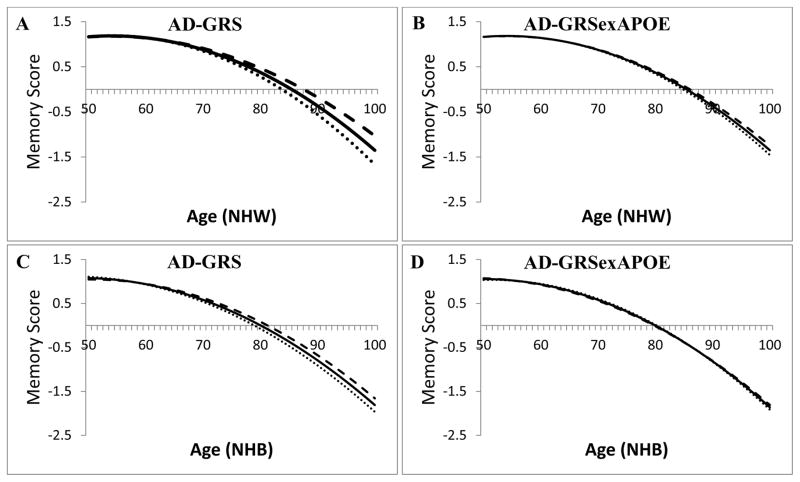Figure 1.
Predicted quadratic trajectories of memory function by Alzheimer’s disease genetic risk score (AD-GRS) from race-specific generalized linear models adjusted for baseline age, gender, and eigenvectors. Shown for a typical individual with an average Alzheimer’s disease genetic risk score (AD-GRS), 2 SD lower than average, and 2 SD higher than average. Note that the trajectory is predicted based on following individuals aged 50 to 100 for up to 14 years, rather than following single individuals for 50 years.
Legend:
A: NHW using an AD-GRS including APOE
B: NHW using an AD-GRS excluding APOE
C: NHB using an AD-GRS including APOE
D: NHB using an AD-GRS excluding APOE
Line styles:
Dashed: Predicted slope of memory decline by age for individuals with an AD-GRS 2 SD higher than average.
Solid: Predicted slope of memory decline by age for individuals with an average AD-GRS.
Dotted: Predicted slope of memory decline by age for individuals with an AD-GRS 2 SD lower than average.

